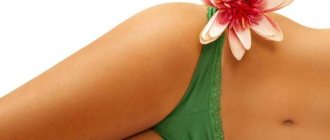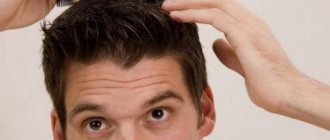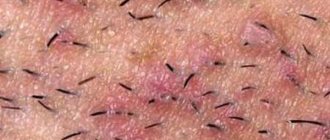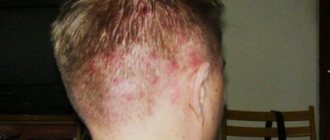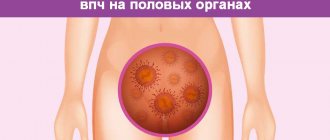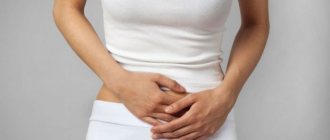Are you constantly embarrassed by others and cover your face with your hair in the hope of hiding skin imperfections? With early diagnosis and treatment of acne, your face can become clear and radiant again.
If you want to smile at your reflection in the mirror again, rather than look away in embarrassment, then this article is a must-read.
Acne is defined as a chronic skin disorder in which hair follicles become blocked and/or inflamed. When bacteria attaches to pimples, infection occurs and blackheads form. There are several variants of the disease, and they range from mild to severe. Appears on the face, neck, chest and back area.
Acne itself can cause not only psychological discomfort to its owner, but also lead to scarring of the skin (post-acne).
Causes of acne
You've probably heard the misconception more than once that acne is the result of poor hygiene. In reality, it is a complex skin condition involving hormonal, dietary and hereditary factors, and for all these reasons and more, acne requires a holistic approach. Treatment largely depends on the severity of the disease. If you have acne, never use alcohol or sulfates in hopes of freeing your skin from the unpleasant disease.
Acne can appear for the following reasons:
- Hormonal imbalance. With increased testosterone production in men and women, intense accumulation of sebum occurs in the glands. This turns out to be a favorable environment for the development of bacteria. Increased testosterone production in women may be associated with ovarian dysfunction. During adolescence (10-18 years), the formation of the endocrine system and puberty occurs. Often at this age, boys and girls experience active production of testosterone, which is what causes acne.
- Disorders of the autonomic nervous system. Frequent stress, lack of sleep, fatigue, increased physical activity, endocrine changes in the body (for example, after childbirth) lead to an imbalance in the work of the sympathetic and parasympathetic parts of the autonomic nervous system. In this case, again, the human sebaceous glands work more intensively.
- Decreased immunity. The skin's natural defenses can be disrupted by bad habits, stress, poor diet, and abuse of ultraviolet rays. As a result, bacteria and fungi multiply, causing acne.
- Hereditary predisposition. If parents have had acne, then there is a high chance that their children will also suffer from this problem. An increased level of testosterone, the level of sensitivity of the sebaceous glands to the effects of sex hormones, a tendency to form defective sebaceous glands, and much more can be inherited.
- Dietary disorder. Floury and sweet foods, as well as sugar, which is found in almost all foods, lead to the development of large amounts of insulin. As a result, the production of male sex hormone increases. And this, as we have already learned above, leads to increased production of sebum. The abundance of unhealthy fats in the body leads to the development of bacteria, which cause acne on the body and face.
- Diseases of the gastrointestinal tract, pathologies of the endocrine system. Acne is often a symptom of internal diseases. For example, diseases of the digestive system lead to the fact that food is not fully absorbed and stagnates. Acne is most often formed due to pathologies such as dysbiosis, constipation, irritable bowel syndrome, acute and chronic gastritis, and stones in the bile ducts.
- Incorrect cosmetic care. This includes failure to comply with personal hygiene rules and the use of low-quality decorative cosmetics. On the contrary, if the skin is constantly subjected to cleansing, it loses its natural protection and the acid-base balance is disturbed. As for low-quality cosmetics: viscous products that contain oils and glycerin are considered especially dangerous. Such cosmetics clog pores and create a microfilm on the surface of the skin that impedes breathing.
Should I squeeze pimples?
From the start, we recommend not to do this. Most people don't know that acne can kill a person. Unfortunately, this is so, according to expert Elmira Dzybova. The dermatologist explains that the area between the nose and chin has blood vessels connected to the brain. If you squeeze a pimple incorrectly, the pus will not completely come out, but will go through the blood to the brain. This will cause infection and blood poisoning. There are cases when patients squeezed pimples above the lip, and infection occurred = meningitis, and as a result, death.
Types of acne
Acne can be in the form of papules and pustules. Papules look like red bumps on the skin; there is no cavity with pus inside them. They can appear on their own and also disappear on their own, but most often they turn into pustules.
Pustules are a classic vulgar pimple that has a cavity filled with pus inside. It rises above the surface of the skin. Most often they occur on the cheeks, less often on the chin and forehead.
According to their form, acne is divided into inflammatory and non-inflammatory:
- Inflammatory form - all elements that are prone to inflammation and suppuration (adolescent acne, mechanical acne, purulent pimples and ulcers).
- Non-inflammatory form - comedones (blackheads), blockage of the follicle opening with thickened sebum.
According to age, acne can be:
- Children's. Often occur in infancy due to the transfer of maternal sex hormones to the baby. They often go away on their own after a few weeks if you follow simple hygiene rules. Pimples have the appearance of closed comedones. They do not fester and do not leave marks on the child’s skin.
- Teenage/youthful. It is observed in 90% of adolescents 12-16 years old. The rashes are papules and pustules with purulent contents.
- Adults. The appearance of a large amount of acne after the age of 30 indicates the development of a serious disease. Acne is often caused by pathologies of the gastrointestinal tract, internal organs, or diseases of the endocrine system. In this case, you should pay attention to your health status and undergo an appropriate examination.
Features of acne treatment in adolescents and adults
The choice of acne treatment method is also influenced by the patient’s age. As a rule, post-pubertal acne is more difficult to treat. Response to treatment in adults can take a long time to develop. It is important that the therapy is carried out under the supervision of a specialist; this will help to adjust the course of treatment in time to achieve greater effectiveness.
Clindovit® is a gel based on clindamycin phosphate. This is a topical antibiotic that exhibits antibacterial activity against propionibacteria. The drug reduces the level of free fatty acids on the skin.6
Clindovit® gel can be used from 12 years of age6. It should be applied twice a day to previously cleansed skin. To obtain satisfactory results, the course of treatment should be continued for 6-8 weeks; if necessary, it can be extended.
*acne
Acne treatment methods
If inflamed rosacea appears on your face and you feel a strong tingling sensation, then you should
Seek advice from our trusted specialists! Since even simple acne can develop into a more unpleasant disease - rosacea.
Doctors will be able to provide all the important information on combating pathology and will carry out safe procedures in the shortest possible time. With timely diagnosis and treatment, your face will become clear and radiant again.
For a long time there was no most effective and rapid treatment for the disease. As a rule, an integrated approach is always used. It involves the work of several specialists at once: a dermatologist, a nutritionist, a surgeon. Treatment occurs in several stages:
- prevent the formation of comedones;
- clear clogged ducts;
- stop the proliferation of bacteria;
- reduce sebum secretion;
- cure inflammation on the skin.
Those with this unpleasant disease took antibiotics, used ointments, and followed a diet. This approach did not always help, but could only do harm. In modern cosmetology, a new effective means for treating acne has appeared - light and laser technologies.
Why can't you squeeze acne?
- Having squeezed out one pimple, wait for 5 more. The skin will turn red, the pus will not come out completely and the “bad pimple” will become inflamed 10 more times, and 5 more of the same will be added to it. You squeeze pimples in any convenient place, with dirty hands, with strong pressure - you can’t do that. The wound that forms on the face will be an excellent place to attract germs. The internal infection will spread throughout all the vessels, resulting in a whole acne attack.
- Scars, wounds, scars. The aesthetic condition of the face will suffer in an instant. There are people who, in nervous situations, begin to pick their faces wildly. One pimple takes more than a month to heal, and after it there remains a mark in the form of a spot. Therefore, you shouldn’t do this if you don’t want to earn new complexes and a dozen newbie acne.
What happens if you don't squeeze out a pimple, what does it look like?
It will be great! A pimple that is not squeezed out does not look very beautiful, but at least it will disappear quickly and will not cause 5 more of its “friends”. There are 2 types of acne: internal and external. Internal ones are dangerous, take longer to pass - it is strictly forbidden to touch them. Wait 3-5 days, it will definitely disappear. Spring ones, it is also not advisable to press. At first it is a small red dot, the next day or every other day pus appears. Wait another day, it will disappear on its own, dry up and fall off.
How many days does it take for acne to go away?
The question is common, but individual. On average, without touching a pimple, it will go away in 3 to 5 days, unless you have serious acne and this is an isolated case. But if hands reach out to it, then the wound can heal for a week, two, a month. Therefore, we strongly recommend not to crush acne, and in case of large-scale rashes, contact a dermatologist.
Add AN to your sources so as not to miss important events - Yandex News
Become a member of the CLAN and every Tuesday you will receive the latest issue of “Arguments of the Week” with a discount of more than 70%, along with exclusive materials not included in the newspaper. Get premium access to a library of the most interesting and popular books, as well as an archive of more than 700 published issues for FREE. In addition, you will have the opportunity to benefit from free legal advice from our experts for a whole year.
- Enter your email address, then select any convenient payment method for your annual subscription
- Scan the QR. In the Sberbank Online application that opens, enter the annual subscription cost (490 rubles). Then send the confirmation code by email
Or
Post-acne
Unfortunately, juvenile acne can leave behind unpleasant consequences called post-acne. At the sites of long-term inflammatory processes in acne, enlarged pores, vascular spots, pigmentation and scars may remain.
The formation of post-acne is promoted by: prolonged course of teenage acne, deep inflammatory elements, squeezing out pimples, late or inadequate treatment.
Do not touch! The main rule of skin care during adolescence is to never squeeze out pimples, blackheads, or other skin growths on your own. This will only worsen her condition.
Scarring after acne remains for life and is a serious cosmetic defect that is difficult to correct only with cosmetic procedures. The only way to prevent these secondary post-acne changes is individual and timely treatment of teenage acne.
Treatment according to instructions
To the question “what will help with acne?” there is no clear answer. It is difficult to single out the main “anti-acne” components: good treatments contain a complex combination of active substances. And yet there are ingredients that are better to remember (and check on occasion for yourself and your specialist):
Anti-inflammatory
: linoleic acid, niacinamide, allantoin, zinc salts, azelaic acid, extracts of tea tree, sage, chamomile, witch hazel, aloe vera.
Antibacterial
: piroctone olamine, glycasil, sulfur, plant extracts of calendula, chamomile, green tea, burdock, essential oils of tea tree, lemon, clove.
Keratolytic
(softening and exfoliating): ANA and BHA acids, retinoids, glycasil, azelaic acid, sulfur, bromelain, bodyaga.
Sebum regulators
: retinoids, linoleic acid, azelaic acid, extracts of green tea, pumpkin, burdock, cedar.
Matting
: aluminum and calcium salts, perlite, clay, kaolin, silicon.
Pharmacy brands undergo careful monitoring under the supervision of dermatologists and are prescribed by doctors, therefore they are preferable for caring for problem skin.
In addition to proper care and corrective drug treatment, beauty salons will be happy to offer a number of procedures to improve the condition of the skin. Which of them will be effective (for example, facial cleansing - mechanical or ultrasonic, various peelings) will be determined by a specialist during a consultation, taking into account the condition of the teenager’s skin.
Not just age
There are additional factors that can aggravate the situation. The number of acne usually increases several times if:
- there are diseases of the gastrointestinal tract;
- there is a lack of amino and fatty acids;
- malnutrition;
- stress occurs (domestic problems, conflicts);
- weakened immunity;
- incorrectly selected cosmetics;
- the child squeezes out pimples on his own: infection gets into open wounds, an inflammatory process occurs, which provokes the appearance of more and more pimples;
- the child takes medications for a long time.
Even though teenage acne is not life-threatening, it can cause a lot of trouble for teenagers. Such an ordinary disease can negatively affect the future lives of young people: psychological discomfort from “less than ideal appearance” can cause low self-esteem, social alienation and isolation.
Change menu
Nutrition plays a key role in skin health. Through it, the body removes unnecessary and harmful substances, so the quality and composition of food directly determines how the face will look. Here are a few rules to follow:
Less sweets
If you have skin problems, then the first thing you need to do is limit your consumption of sweets: chocolate, cookies, cakes and other confectionery delights. What did they do wrong? Sweets contain, in addition to flavor enhancers and preservatives, so-called fast, or easily digestible, carbohydrates, which means that after eating the blood sugar level rises sharply, causing a jump in the level of the hormone insulin. Such a jump promotes the activation of inflammatory processes at the cellular level and makes the body more susceptible to various infections. It follows that all traditional sweets contribute to inflammation and create conditions for the appearance of pimples and blackheads.
Let fruits and berries now take the place of the usual sweets in the diet. But here, too, moderation is required, since fruits and berries also contain fast carbohydrates (though without “chemicals”).
Avoid fatty foods
Excess fat obtained by the body from the food eaten is not only stored in the form of extra pounds, but also contributes to an increase in fat content. As a result, the pores through which the skin carries out gas exchange (“breathes”) and also removes harmful substances become clogged, and bacteria multiply in them. You need to make sure that the meat is lean. It’s good to add seafood to your diet and avoid eating smoked sausages and fatty dairy products, including cheeses.
Eliminate what is known to be harmful
Do not abuse fast food, chips, snacks, croutons and crackers. These products contain a lot of salt, spices, flavorings and oils. These ingredients hinder and disrupt the functioning of the intestines and sebaceous glands. You also need to be careful with the use of spices and seasonings (horseradish, sauces, mayonnaise, pepper, mustard). Frequent and abundant consumption of foods rich in essential oils - garlic, onions, radishes - can have a negative effect on the condition of the skin.
It is advisable to avoid spicy food - it affects not only the intestines and liver, but also affects the peripheral nervous system, which, among other things, is also responsible for the regulation of sweat and sebum secretion, as well as the tone of blood vessels.
It is worth taking a closer look at green vegetables and herbs - they are rich in zinc, which regulates the functioning of the sebaceous glands and ensures the normal functioning of the intestines due to their high fiber content.
Drink a lot, but not everything in a row
The best assistant on the path to healthy and beautiful skin is clean drinking still water. You need to drink at least 1.5-2 liters of liquid per day (you can add other drinks, but the majority of this dose should be water). If this is an unusually large amount, then you can simply put a bottle of water next to you and drink small portions throughout the day.
You should be careful with various carbonated and non-carbonated drinks. They usually contain a lot of sugar and a whole list of chemicals (dyes, preservatives, taste improvers, stabilizers). Thus, these “thirst quenchers” deal a double blow - they negatively affect the condition of the gastrointestinal mucosa and lead to the development of skin rashes, allergic reactions and acne, which are nothing more than the body’s attempt to get rid of unnecessary “chemical cargo”.
Among dairy products, it is better to give preference to kefir and live yoghurts. They improve metabolic processes and normalize intestinal flora.
Maintain regularity
The modern rhythm of life dictates its own rules. Many people no longer even notice the lack of breakfast, the replacement of a full lunch with constant snacks throughout the day, and they often overeat at dinner, sometimes just before bed. Problem skin does not tolerate such neglect.
The body requires regular nutrition with three main meals, the last of which no later than 3-4 hours before bedtime. Light snacks if necessary.
But you shouldn’t expect quick results, even if you start eating right and following a normal daily routine. Harmful substances have accumulated in the body for more than one day; it takes time to cleanse the body. Moreover, at first after the introduced changes in diet, it may seem that there is some exacerbation of inflammatory processes on the skin. These are the consequences of enhanced removal of accumulated toxins from the body.
At the age of up to 25 years, the epidermis is completely renewed on average in 21-28 days.


